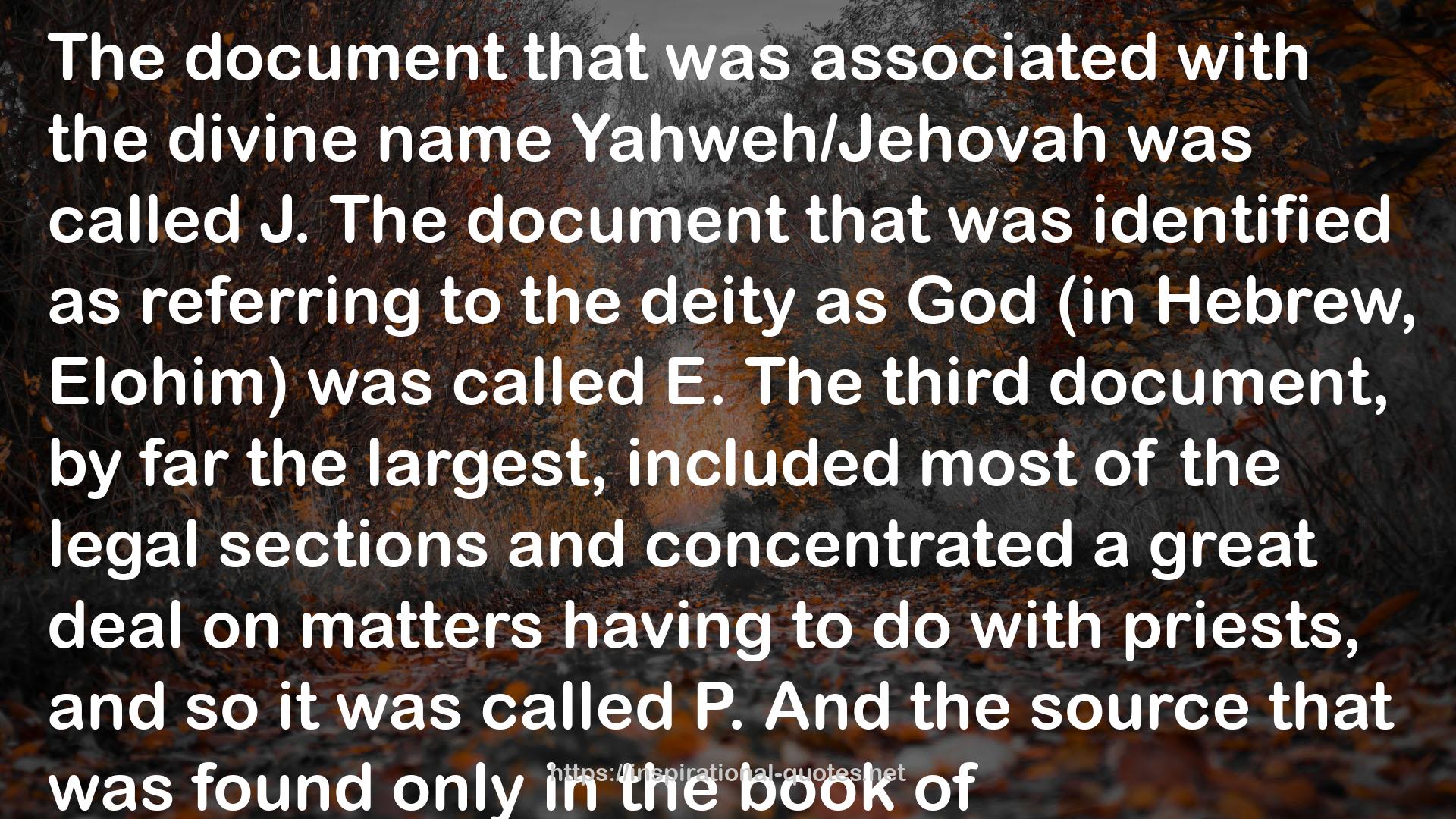" The document that was associated with the divine name Yahweh/Jehovah was called J. The document that was identified as referring to the deity as God (in Hebrew, Elohim) was called E. The third document, by far the largest, included most of the legal sections and concentrated a great deal on matters having to do with priests, and so it was called P. And the source that was found only in the book of Deuteronomy was called D. The question was how to uncover the history of these four documents—not only who wrote them, but why four different versions of the story were written, what their relationship to each other was, whether any of the authors were aware of the existence of the others’ texts, when in history each was produced, how they were preserved and combined, and a host of other questions. The first step was to try to determine the relative order in which they were written. The idea was to try to see if each version reflected a particular stage in the development of religion in biblical Israel. This approach reflected the influence in nineteenth-century Germany of Hegelian notions of historical development of civilization. Two nineteenth-century figures stand out. They approached the problem in very different ways, but they arrived at complementary findings. One of them, "
― Richard Elliott Friedman , Who Wrote the Bible?
